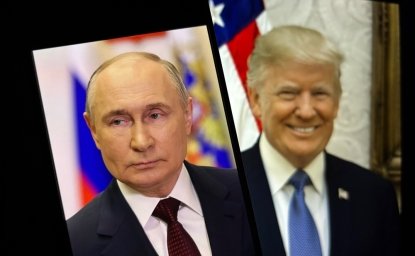Russia's Capitalist Revolution: Why Market Reform Succeeded and Democracy Failed


"Why did market reform succeed and democracy fail in Russia?" asked Anders Åslund, senior fellow, Peterson Institute for International Economics and former research scholar, Kennan Institute at a 21 April 2008 lecture. The answer, according to Åslund, is directly related to the speed and ideas behind the economic and political reforms undertaken by the newly installed Russian government in the early 1990s. The consequences of the successes and failures of those early reforms are now evident in Russia today, with a strong and growing market economy paired with a fragile authoritarian government.
By the mid-1980s the Soviet system had been stagnant for years, and most Russians did not believe their society could change. Åslund described how he spoke with Russians on the street the week Mikhail Gorbachev rose to power, and when asked to name the most important news item, many responded that cucumbers had just reached the markets. Gorbachev tried to reform the Soviet system, Åslund said, but was forced to navigate between the hardliners and revolutionaries in his Politburo. Gorbachev failed, and Boris Yeltsin, one of the "real revolutionaries" of the time, emerged as president of a newly independent Russia.
Revolutions result in a temporary breakdown in state capacity and institutions. This period of time represents a narrow window of opportunity for policymakers to enact reforms that will change the pillars of society. While "mistakes are inevitable," according to Åslund, policymakers must act quickly and focus on essential issues. "To wait means to fail," stressed Åslund, quoting the former prime minister of Estonia Mart Laar. That window of opportunity was seized by the Yeltsin government in 1991–92 in the realm of economics, but not politics, Åslund said.
Yeltsin's team of economic advisors, led by Yegor Gaidar, conceived a plan of economic reform that would irrevocably destroy the mechanisms of central planning and place as much of the Russian economy in private hands as quickly as possible. These sweeping reforms were pushed through the Russian parliament at the height of Yeltsin's popularity in late 1991 and implementation began in early 1992. Once Russia began adhering to a conservative fiscal and monetary policy in 1999, Åslund contended, the "economic pillars" put in place by those reforms made the subsequent economic growth possible. Åslund pointed out that the Russia's strong economic growth predated Vladimir Putin's rise to power.
By contrast, continued Åslund, Yeltsin failed to take advantage of the same initial window of opportunity for political reform. The economists told Yeltsin what reforms were necessary, recounted Åslund, but the political scientists did not. Yeltsin waited until 1993 to dissolve the Communist-dominated parliament, yet by then he lacked the popular authority he had enjoyed in 1991. The result was a parliamentary uprising, which Yeltsin put down by force. The new constitution enacted in 1993 established a system with excessive presidential powers, and paved the way for the authoritarian administration that was to follow Yeltsin, stated Åslund.
Yeltsin's greatest mistake, according to Åslund, was appointing Vladimir Putin to succeed him. From the early days of his administration, it was clear that Putin would govern as an authoritarian, even though he implemented some important market reforms in his first term, Åslund argued. "His second term," Åslund said, "was pure authoritarianism." Putin oversaw the takeover of Yukos assets (wiping out the value of $12 billion in Yukos shares held by U.S. citizens), increased state control over the Russian economy, expanded rule through the secret police, and further centralized executive power into his own hands.
While Putin is widely credited for Russia's high economic growth rates and for bringing stability to Russia, Åslund contended that both claims are part of "the Putin myth." Russia is a laggard in the region in terms of its economic growth, ranking 12th in growth since 1999 among the 15 former Soviet republics. Moreover, Åslund continued, "Putin is not the creator, but the beneficiary of Russian growth," which is largely based on high oil prices and the economic reforms put in place in the early 1990s. Oil and gas production growth rates are falling, and that fall began during Putin's second term in spite of higher prices. In terms of stability, Åslund noted that the murder rate has increased under Putin, as has corruption. According to Transparency International, corruption in Russia increased beginning in Putin's second term and is now higher than in Ukraine.
Åslund predicted that Putinism will ultimately fail in Russia. Russia is too rich and educated to remain authoritarian. Only Singapore and seven other oil states are richer and also authoritarian, he asserted. Russia is also an outlier in terms of its staggering corruption—only Equatorial Guinea is richer and more corrupt. "No modern state can function with kickbacks of rates of 20 to 50 percent" that are common in Russia, Åslund stated. Putin's regime is a personal dictatorship, and such systems rarely survive a succession. In fact, Åslund noted, Russia's presidential election campaign was rife with conflict between rival groups of elites that included arrests and exchanges of kompromat (compromising materials), and that conflict remains unresolved.
While Putin's authoritarianism is fragile, concluded Åslund, Russia's capitalism is strong. Economic growth is likely to continue in Russia, but requires new reforms to address unsolved problems ranging from oil production declines to inadequate infrastructure to inflation.


The Kennan Institute is the premier US center for advanced research on Eurasia and the oldest and largest regional program at the Woodrow Wilson International Center for Scholars. The Kennan Institute is committed to improving American understanding of Russia, Ukraine, Central Asia, the South Caucasus, and the surrounding region through research and exchange. Read more




